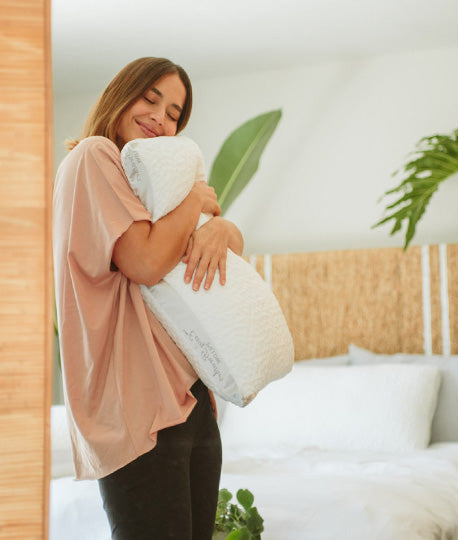A simple Google search of the terms "memory foam mattress" or as you drive around and look at mattress sales in Berkeley, San Francisco or in the Bay Area, you will see everyone is selling memory foam mattresses and pillows. In fact, memory foam mattresses are all the rage. This is because when compared to your every day Sealy, Simmons, Serta, McRoskey's and other wire coil mattress, memory foam mattresses do not put pressure on your body, resulting in a pressure-free sleep.
However, memory foam is not without it's negatives as well.
When you do a search for terms like "memory foam complaints" you will see lots of people complaining about memory foam mattresses. For years now, customers have come into the stores I have worked and plainly stated "I don't like memory foam, it sleeps hot." They are not mistaken, of course, as many memory foam mattresses do in fact sleep hot. But not all memory foam beds are created equal....
Let's examine why some memory foam beds sleep hot and why people have formed the opinion that memory foam beds are not good for hot sleepers.
First of all, most memory foam mattresses are covered in a fabric that is made of plastic. They may call the fabric some fancy marketing term, but it is usually covered in some form of plastic fabric, such as polyester or microfiber. The problem with man-made fabrics such as these is they are plastic and plastic is not a breathable substance. Of course, living in the San Francisco Bay Area, memory foam mattresses sleeping hot may not be as much of an issue for consumers in areas like Las Vegas where it gets very hot, but sleeping in plastic is not being to be a good idea in any climate. And yet, most of the companies that make memory foam mattresses continue to construct them out of materials that sleep hot. Why? Plastic fabrics are cheap, and they can maintain a higher profit margin.
Another issue is the box spring. Some of the leading brands even insist you purchase their box spring or it will void the warranty. Citing the need for a rigid base as the reason, even though they sell the same memory foam bed on an adjustable bed base, they will tell you it's mandatory to keep your warranty on your new bed intact. However, the very base they insist on you buying is part of the cause of the heat issue. A solid, non-breathable base will constrict air flow around and beneath the mattress, leading to increased heat retention.
And yet another factor is the simple construction flaw of stretching the plastic fabric directly over the foam, with no air flow between your body and the non-breathable memory foam core.
These factors can all lead to reinforcing consumer's notion that memory foam beds sleep hot. While some companies, such as Bed In A Box.com addresses these issues and make a memory foam mattress that does not sleep hot.
First, they use natural fibers, like bamboo and silk, to cover the memory foam mattress. These natural materials are more breathable and wick away moisture. Also, they add fibers quilted into the cover, allowing loft above the foam and air flow around your body so your body heat does not get trapped between your skin and the foam. And they also recommend a slatted platform or breathable box spring to help the bed stay cool while you sleep. The foams they use are also an open cell, which means they are more porous, allowing more air to circulate inside the foam, helping regulate your body temperature A recent study published in the Furniture Times commissioned by the leading memory foam company actually shows their beds sleep at about 97 degrees when you are sleeping. That is too warm a surface to sleep in!
So, not all memory foam sleeps hot, or off-gasses. You just have to do your homework, visit independent review sites and try them out yourself. There are a lot of mattress stores in the San Francisco Bay Area and East Bay that have memory foam mattresses for you to test lay.





